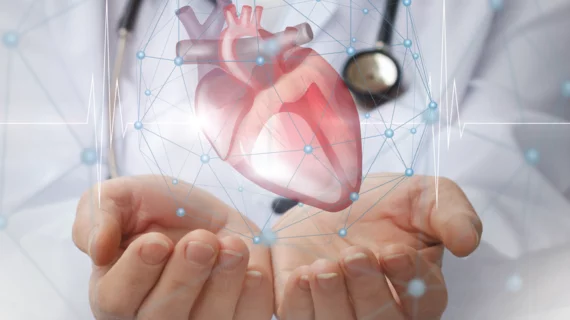PET tracer can help fight heart attacks earlier in the process
A new radiotracer can improve heart attack outcomes by zeroing in on cellular activity that may inflict permanent damage during the event.
The revelation, published in the December issue of the Journal of Nuclear Medicine, utilizes 68Ga-FAPI-04 PET to image fibroblast activation after myocardial infarction, pinpointing a time window to prevent dangerous cardiac fibrosis.
“We know that the temporospatial presence of activated fibroblasts in the injured myocardium predicts the quality of cardiac remodeling after a heart attack,” Zohreh Varasteh, PhD, research fellow at Klinikum rechts der Isar der TUM in Munich, Germany, said in a statement. “Therefore, imaging of activated fibroblasts using 68Ga-FAPI-04 PET may have significant diagnostic and prognostic value, which could aid in the clinical management of patients after myocardial infarction.”
Fibroblasts are important to maintaining the structural integrity of the heart, but excessive amounts can cause stiffness and lead to decreased contraction in the vital organ. The team performed a preclinical study, testing the radiotracer in 20 rats subjected to a heart attack.
That animal cohort underwent a procedure to permanently close off a specific portion of the coronary artery, called ligation, while another four rats were imaged with the same radiotracer, but did not undergo the surgery. PET imaging was completed at various time intervals up to 30 days after heart attack. The researchers also performed 18-F-FDG imaging three days post-heart attack in both groups.
Results showed that the uptake of 68Ga-FAPI-04 PET peaked six days after ligation, offering a precise time window clinicians can pinpoint to intervene before cardiac fibrosis sets in and leads to more long-term effects.
“While preclinical development of potential anti-fibrotic approaches is far advanced, there has been little clinical validation due to the lack of sensitive and specific imaging technologies for assessing cardiac fibrosis progression or regression,” Varasteh said. “In this regard, 68Ga-FAPI-04 PET has emerged as an important tool for the detection of fibrotic processes in the efforts to improve heart failure therapy.”
In the future, and after further testing, Varasteh said that these advances may be used in other fibroblast-related conditions, such as hypertension, ischemic, dilated and hypertrophic cardiomyopathies.

